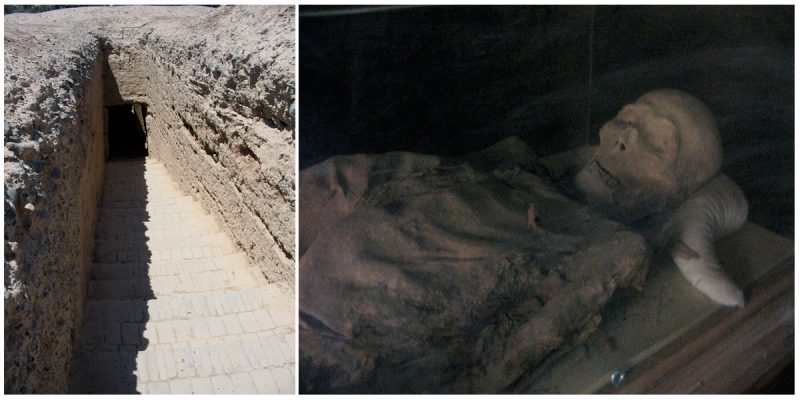A few kilometers away from the city of Gaochang in the Gobi Desert there is an underground cemetery of ancient Gaochang residents. It is known as the Astana Cemetery or Astana Graves and is located southeast of Turpan in Xinjiang, China.
It is considered to be one of the humblest burial sites in China. The whole cemetery contains over 1,000 tombs in which both nobles and common people from the Western Jin Dynasty and Mid-Tang Dynasty were buried.

Because of the arid environment of the site, many artifacts, as well as actual mummies at the tombs, have been well preserved. The bodies in the tombs were all shrouded in textiles and they had oval shaped-eye-masks and an oval piece of silk covering their faces. Each body was buried with personal belongings such as shoes and hats which were placed alongside them. The coffins were made of wood and many of them had patterns of white dots and lines painted on the surface. A lot of food remains were found inside the tombs like pieces of meat, grapes and even a jam tart.
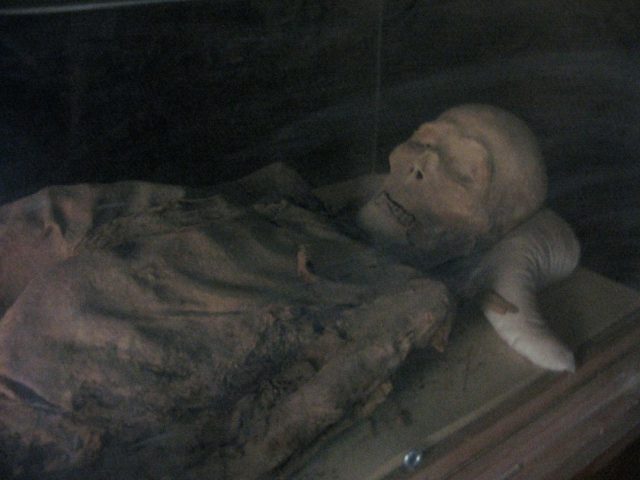
According to the documentation buried within the tombs, the complex was established in 273 and was abandoned around 778. At the beginning, the area was occupied by the Jushi who were people that lived in felt tents and had a fair knowledge of farming. They were tribes who always moved in pursuit of grass and water for grazing. Until 450 AD, the main city was the old city Jiaohe.
In the first two decades of the 20th century, the site was visited by many archeologists including Albert Grunwedel, Sergey Oldenburg, Albert von Le Coq, and Otani Kozui. Since the discovery of the 1,000 tombs, a staggering 456 have been excavated but none of them have, as of yet, have been found to belong to Gaochang’s rulers. Thousands of documents have been found inside and 205 tombs contained manuscript fragments.
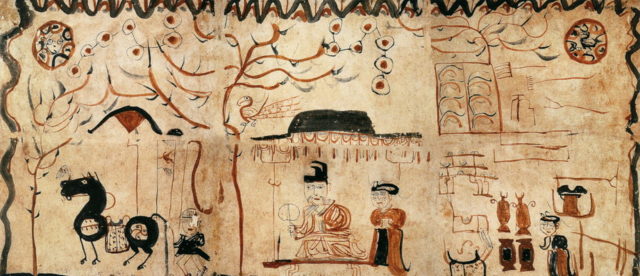
The manuscript fragments were transferred to the St Petersburg Branch of the Institute of Oriental Studies of the Russian Academy of Sciences. In 1926, the materials of the first expedition were in the Imperial Gift Museum of Kyoto and by 1944, they were owned by the private collector Teizo Kimura.
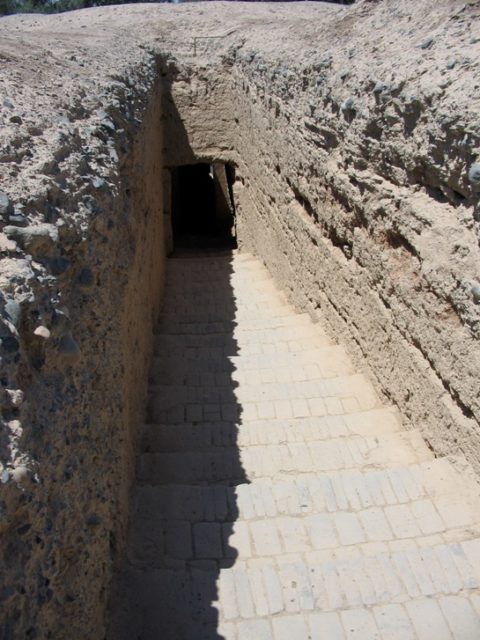
After the war, the materials were repurchased by the Japanese Government and today they are on display in the Oriental Section of Tokyo National Museum, along with other artifacts found in the tombs.
The manuscripts that were found by the German expedition are in the Museum of Asian Art in Berlin and the pieces that were discovered by the archaeologist Aurel Stein are in the British Library, the Victoria and Albert Museu, the British Museum, as well as in the National Museum in New Delhi, India. Since 1958, thousands of artifacts were brought to the Urumqi Museum by Chinese archaeologists.
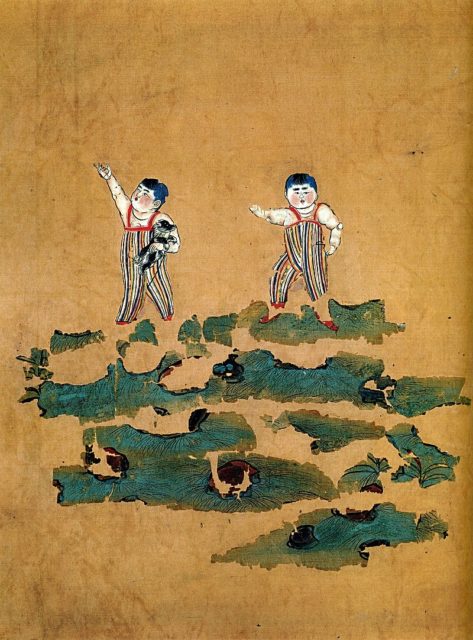
Today, only three of the tombs are open to the public and only one of them (tomb number 210), houses actual mummies. The tomb houses two mummies which are kept safely in glass caskets. They are well preserved and were found with a Persian coin in their mouths.
On the site, there are sculptures and murals that tell a story about the creation of the Chinese people by the gods Nuwa and Fuxi. The sculpture of these ancestors is the central one in the territory of the cemetery.
